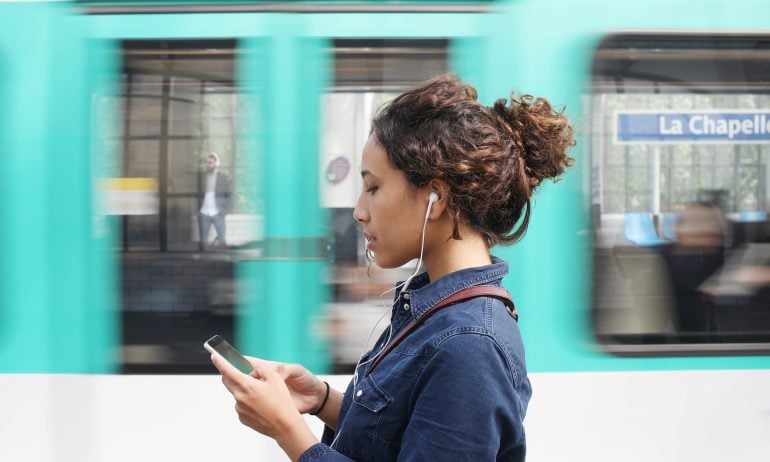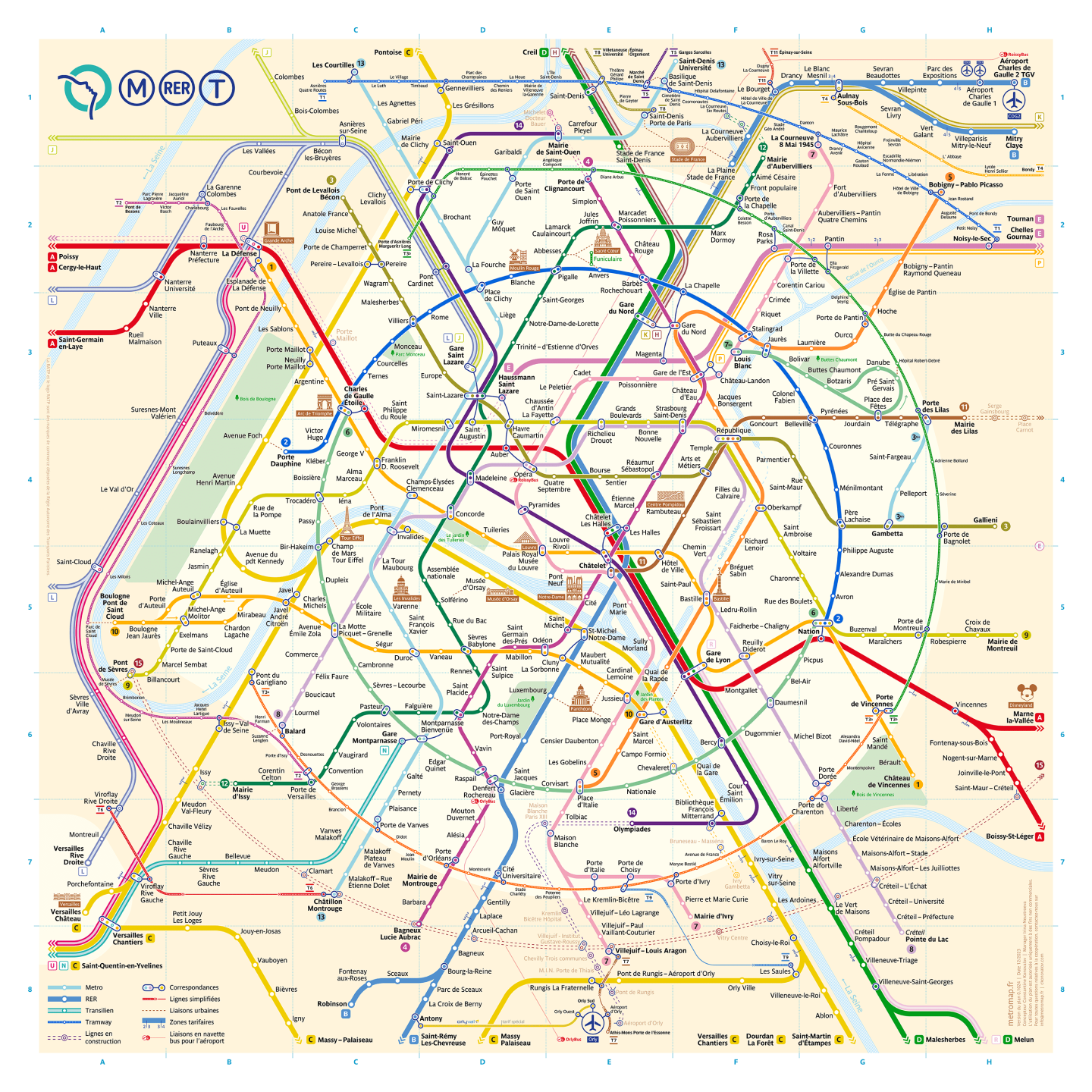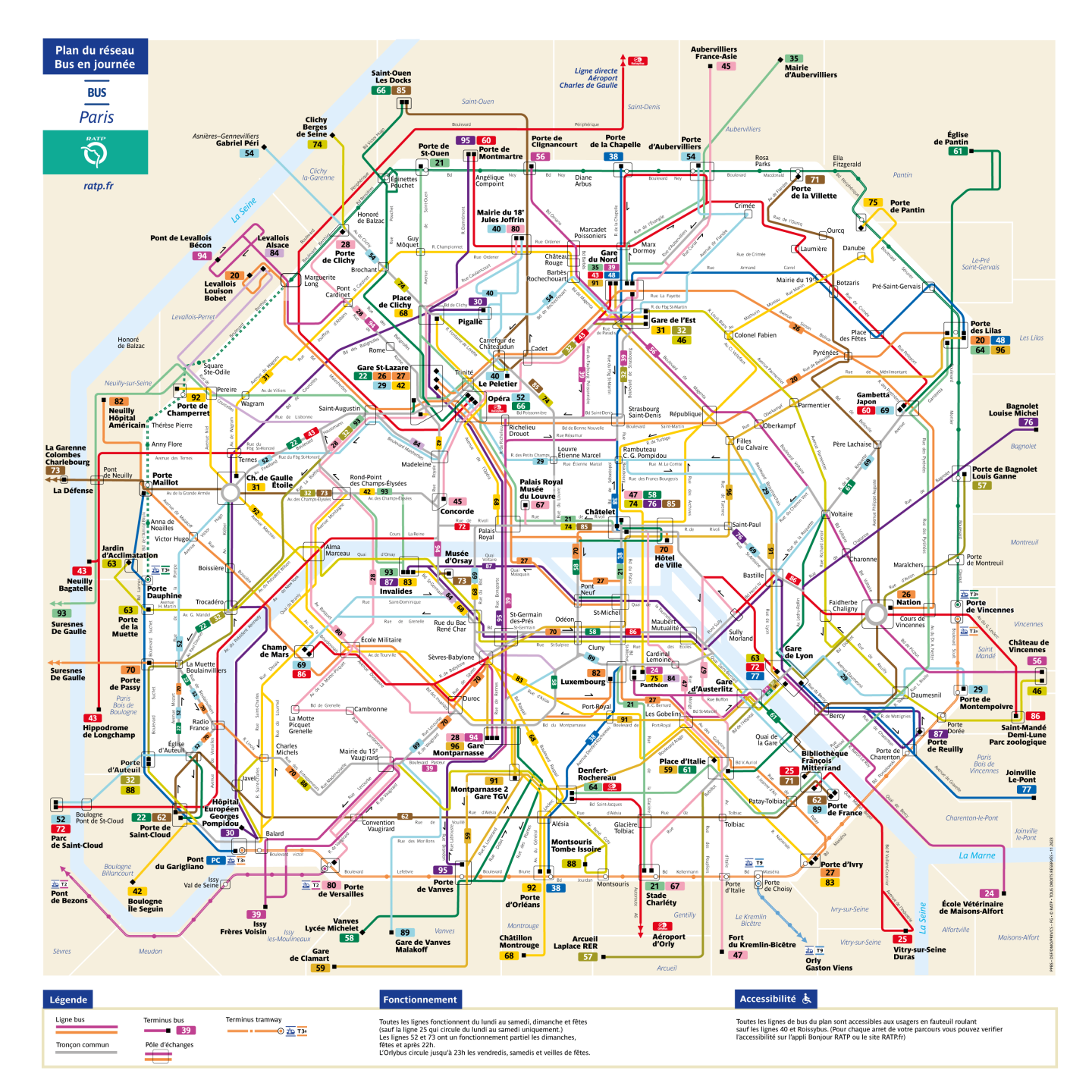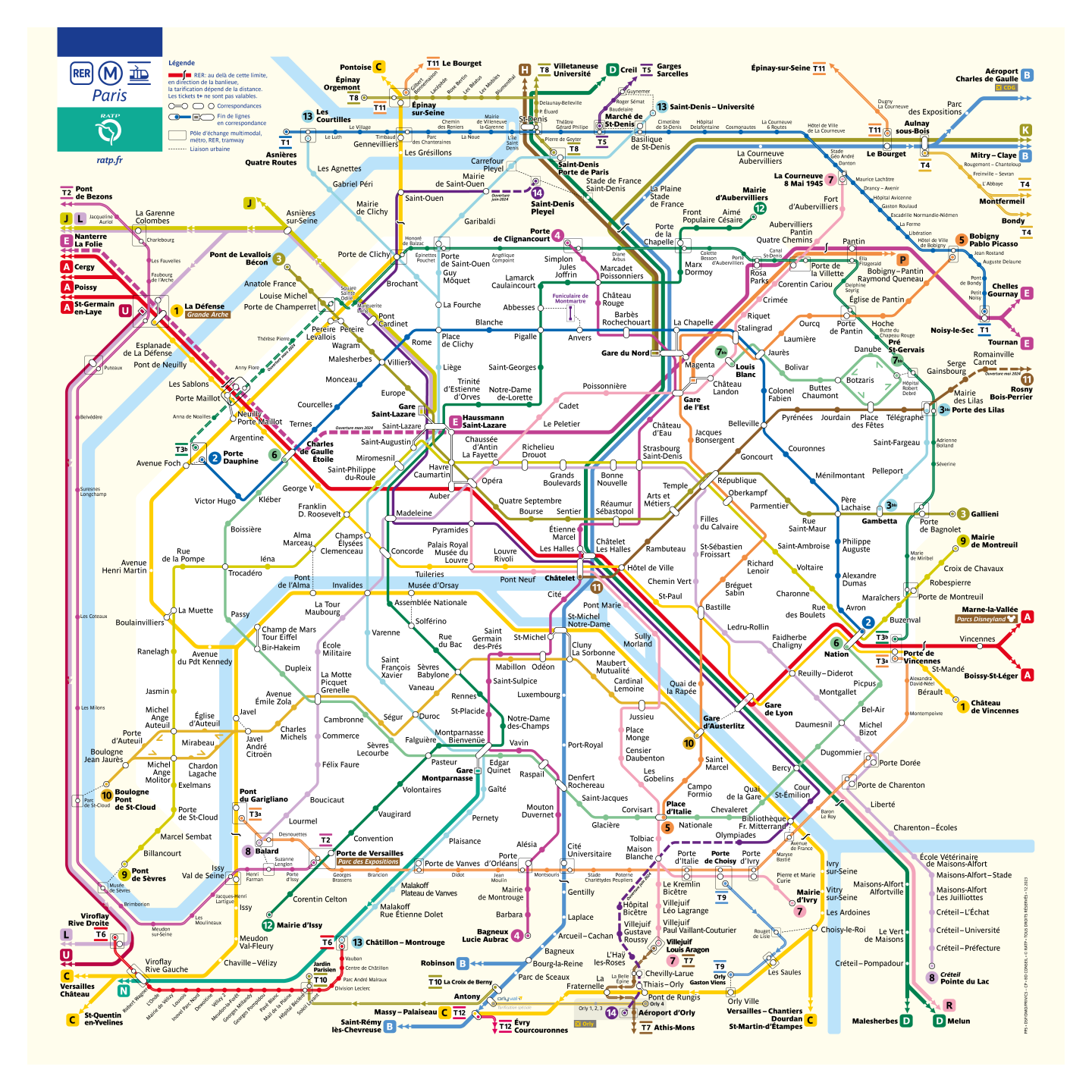How to Get Around Paris During the 2024 Olympics

Many, or all, of the products featured on this page are from our advertising partners who compensate us when you take certain actions on our website or click to take an action on their website. However, this does not influence our evaluations. Our opinions are our own. Here is a list of our partners and here's how we make money.
All eyes will be on Paris in 2024 as the French capital gears up to host the 2024 Summer Olympics. “The City of Light” is known for many wonderful things: romance, cuisine, culture, museums, shopping, and of course, traffic. However, there is another thing it is known for, and that’s an excellent public transportation network.
Let’s take a look at the easiest ways to get around town so you can cheer on your favorite athletes — rather than sitting in a car.
Transit zones
The city is divided into five different transit zones, which can affect the price of a ticket for various forms of transport. The metro system, though, operates as a single zone, and even if you cross zones, the price remains the same if you stay on the metro network.
Zone 1 is in the center of the city and encompasses many of the Olympic venues, including the Esplanade des Invalides and Trocadéro. As you head into the outer circumference of the city, the suburbs and outskirts (including both of the city’s main airports), you will enter other zones. This includes Versailles and Disneyland Paris.
A maps app can help outline the route to your destination and easiest mode of transit. You can also use the Paris public transport website or the Bonjour RATP app to find the most accurate public transit information. One benefit of using public transportation is that you won’t have to worry about tipping in France.
» Learn more: The best airlines to fly to France
Ticket types
Paris has phased out the use of paper tickets (although any previously purchased paper tickets can still be used). Tickets are now available via the Navigo Easy card or a digital version, both of which can be topped up as needed and used on all transport options.
The cost of a single ticket (T+) varies by transit type and zone, but if wholly within Zone 1, it is 2.15 euros ($2.35) on all transport if bought in advance, but there is a surcharge if purchased on the bus or via SMS. If you are planning to take at least 10 trips, you can get a discount by purchasing a contactless Navigo card for 17.35 euros ($18.94).
1. Metro

The Paris Metro network is extensive with 14 main lines (plus two smaller lines) that traverse the city in zigzag patterns beneath the ground to connect more than 300 stations. More than 4 million people per day use the metro in Paris.
A handful of lines have sections that traverse above ground for short sectors for some brief sunlight. For example, Line 6 passes the Eiffel Tower and crosses over the Seine between Bir Hakeim and Passy stations.
Metro stations are everywhere in Paris, and each station often has more than one entrance on different sides of the street to minimize people crossing the road. Look for the letter M or signs that say Metro or Metropolitain. It’s easy to stumble upon one if you walk long enough.
Each numbered line is also color-coded, and the most important thing you need to know is which direction to go when entering the station. There are wall maps at the station.
Once you know your destination, you can follow the lines to follow where you need to go. You may need to connect between two or three lines to reach it. Look for the name of the last stop of each line on signage, and there are maps that show the entire line of stops along the way.
You need a ticket to scan at the turnstyle. Tickets are available from kiosks at the station, or in some stations, from a person at a booth. Credit cards with a chip or cash are accepted as payment. Be aware many stations have elevators and escalators, but the fastest option might be going up or down a lot of steps.
» Learn more: The best travel credit cards right now
2. Bus

The bus system is a transit option that allows you to see the city as you travel to your destination. Bus stops are everywhere, with buses numbered to represent the line they're traveling.
Stations often have screens that indicate how long the wait is for the next bus. Like the metro network, you will need to know your destination to determine the line, and you may have to change buses. If you transfer within 90 minutes, you won’t need to buy a new ticket (just like on the metro). When the bus approaches the stop, wave your hand so that the driver knows to stop.
The bus will display the last destination on the bus line, but it will make many stops along the way. You will need to push the button on the bus to indicate you want to stop, which is different from the metro.
The metro visits each stop, but the bus will not visit each stop unless someone needs to get on or off, so it requires a bit more attention. It is easy to get distracted by the scenery, so make sure you’re aware of where your intended stop is.
Most buses are accessible for those in wheelchairs — with ramps that can be lowered. Tickets for the bus work in the same way as the metro, and the contactless Navigo card or digital version work seamlessly. Just remember to scan them when you board the bus.
3. RER
This is the train system that connects travelers to the metro network, but also operates to the surrounding suburbs of Paris. It stands for Réseau Express Régional (Regional Express Network).
You can travel on the RER within Zone 1 without additional charge, but if using this to other zones (like to the airport), the ticket will be more expensive.
The RER looks more like a train and is labeled with a letter. Take note that within the city’s Zone 1, the RER train does not make as many stops as the metro. This means you can cross the city faster than on the metro, but it may not get you as close as the metro’s more precise network.
4. Tram

A growing number of trams are connecting points around the city. RATP operates 13 lines and uses a similar ticket system. This map shows a blend of the metro, RER and tramway network, but they are typically on the outskirts of town making them less useful for tourists.
5. Other options
The city has Uber, as well as a wide range of metered taxis. To locate a taxi, you can flag them down when they pass or go to a taxi stand where they line up. Both are subject to traffic congestion, though.
If you want to visit one of the most iconic sites in the city, the Basilica of Sacré Coeur de Montmartre, you can walk (it’s up a huge hill), travel by taxi or Uber, take a bus or the historic funicular. This train runs up the hillside and offers great views of the city with just two stations at the bottom and top of the hill.
When going to the airport, the RoissyBus will take travelers directly to the terminals from Paris-Opéra (at the corner of Rue Scribe and Rue Auber). These can be subject to traffic delays, but otherwise take about one hour. A single ticket is 16.60 euros ($18.08) to Paris-CDG and 11.50 euros ($12.53) to Paris-Orly.
If you plan to move around the city a lot, the Paris Visite pass can be the biggest money saver in Paris during the Olympics. It is available for a set amount of time (one, two, three or five consecutive days) for unlimited transport on the entire public transportation network. You can choose between Zones 1-3 or Zones 1-5. There are prices for children and adults, and they vary based on zones and number of days.
How to get around Paris during the Olympics
Whether you're trying to get to one of the sporting venues or you're actually getting to one of the other myriad activities in Paris this summer besides the Olympics, brace for crowds.
You can bet that traffic will be bustling and relying on public transportation will be the easiest way to explore. Maps are well laid out, but can be confusing. It can be helpful to fire up a map app on mobile devices to have a step-by-step guide to help you get where you need to go.
During the Olympics, an influx of staffers will help direct people. The world comes together for this global sporting event, and Paris has many options to get visitors moving.
How to maximize your rewards
You want a travel credit card that prioritizes what’s important to you. Here are some of the best travel credit cards of 2024:
Flexibility, point transfers and a large bonus: Chase Sapphire Preferred® Card
No annual fee: Bank of America® Travel Rewards credit card
Flat-rate travel rewards: Capital One Venture Rewards Credit Card
Bonus travel rewards and high-end perks: Chase Sapphire Reserve®
Luxury perks: The Platinum Card® from American Express
Business travelers: Ink Business Preferred® Credit Card


